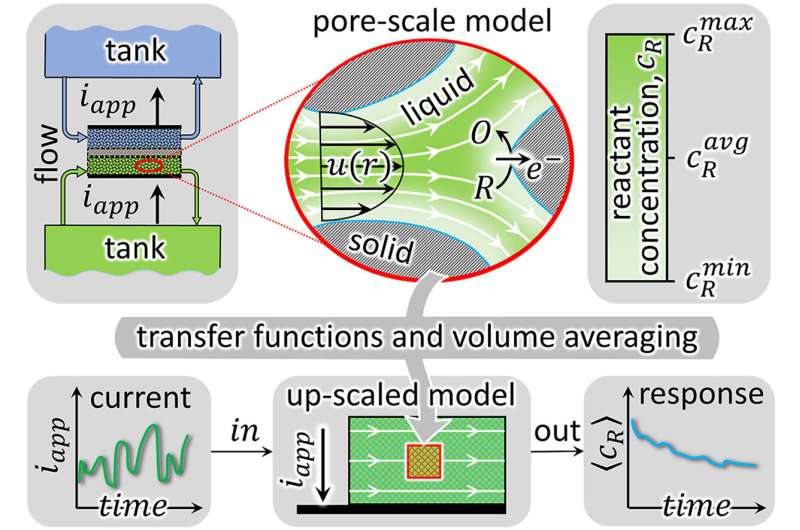
MechSE Associate Professor Kyle Smith and doctoral student Md Abdul Hamid recently published an article in the Journal of Power Sources.
Their study, "A bottom-up, multi-scale theory for transient mass transport of redox-active species through porous electrodes beyond the pseudo-steady limit," demonstrates that conventional theory approaches underpredict the power capacity of flow batteries such as those used in electricity production from renewable energy sources.
"We have discovered a new means by which to understand how convection occurs inside of reactive porous media," Smith said of their theory, which proposes introducing certain frequency-dependent transfer functions to up-scale mass transport occurring in the microscopic pores of electrodes. Although transfer functions are routinely used as mathematical tools in control theory, they have never before been applied in this context or derived in this manner.
The two began formulating their theory before the COVID-19 outbreak, making their publication a long-anticipated success. Their theory sheds new light on familiar mass and heat transfer principles—they introduced a spectral Sherwood number, which is a type of transfer function, to extend the film law of mass transfer to transient conditions. Similarly, a spectral Nusselt number extends Newton's law of cooling for convection heat transfer. The two formulated the embedding of transfer functions into an up-scaled model to obtain the time-domain response of flow batteries.
"We have uncovered a new understanding of certain non-dimensional parameters that are ubiquitous in convection heat/mass transfer," Smith said. "For the first time to our knowledge, we have extended these ideas from their conventional application in time-invariant, or steady state, settings to transient settings in a manner that accounts for changes in the microscopic dynamics that result from transient cycling."
Indeed, the team's theory demonstrates that flow batteries can be operated at higher than their limiting current for short periods of time, which suggests that cheaper and lighter batteries can be designed for these cycling conditions.
"These findings not only provide a better modeling approach for accurate prediction of an existing flow battery's rate capability, but also provide guidelines toward more efficient designs, operating schemes, and materials," Hamid said.
Smith and Hamid intend to apply their theory to different microstructures for porous electrodes for various energy and environmental devices using electrochemistry. Their next steps also include extending the theory beyond the range of conditions demonstrated in their publication.